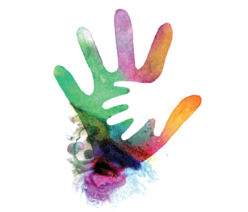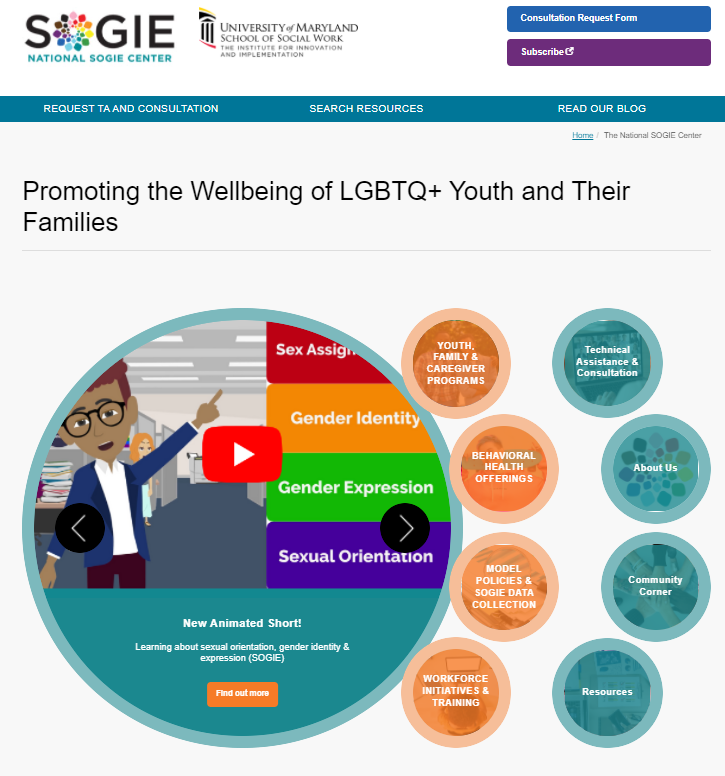
|
|
March 2022 | Issue 11
The Grantee Connection is a quarterly digest featuring new and noteworthy products, information, and lessons learned from select Children's Bureau discretionary grants to inform research, capacity building, and program improvement efforts.
Featured Grantees
|
Improving Outcomes for Infants and Families Affected by Substance Use Disorders and Prenatal Substance Exposure
Project Description: From 2017 to 2021, the National Quality Improvement Center for Collaborative Community Court Teams (QIC-CCCT) established collaborative community court teams to design, implement, and test across demonstration sites approaches to better meet the needs of infants and families affected by substance use disorders and prenatal substance exposure.

Project Highlight: QIC-CCCT released two briefs highlighting the efforts of the collaborative community court teams across 14 demonstration sites to enhance and expand their capacity to support and improve safety, permanency, well-being, and recovery outcomes for infants, families, and caregivers.
Both briefs help collaborative partners improve systems and services for infants and parents affected by prenatal substance exposure.
Learn More: Find information about the demonstration sites and view additional resources from QIC-CCCT, including toolkits for professionals, briefs, and webinars.
Graphic from QIC-CCCT's Program Summary Brief
|
Engaging and Empowering Children and Youth in Foster Care
Project Description: Informed by the lived experiences and professional expertise of youth formerly in foster care, the Quality Improvement Center for Engaging Youth in Finding Permanency (QIC-EY) is a 5-year cooperative agreement, funded in 2021, that aims to bring about systemic culture shifts resulting in intentional policy and practice changes directly related to the child welfare system’s engagement and empowerment of and partnership with children and youth.

Project Highlight: To officially introduce the project to the field and begin the process of identifying potential pilot sites, QIC-EY recently hosted two webinars. During the “Walk the Talk” sessions, attendees learned about QIC-EY's goals. In addition, expectations and benefits for pilot sites were shared as well as information on the selection process. Maci Kean, Youth Engagement Advisory Council member, kicked off the second webinar with a poignant narrative that brought to life the importance of the project:
“It's an honor to be invited to be part of the Quality Improvement Center for Engaging Youth in Finding Permanency as they work to change this paradigm and ensure that children and youth are authentically engaged in both small and large decisions that impact their life and their future. Creating forever means working together!” View the full webinar to hear more from Maci, as well as Jamole Callahan, council member, and Leslie Cohen, project director.
Learn More: To find out more about this project and/or becoming a pilot site, contact Melinda Lis, project director, at mlis@spaulding.org.
Photo provided by Spaulding for Children
|
Understanding and Addressing Child Welfare Workforce Turnover
Project Description: The Quality Improvement Center for Workforce Development (QIC-WD), a 5-year cooperative agreement funded in 2016, was developed to implement and evaluate strategies to strengthen the child welfare workforce. In partnership with eight public child welfare jurisdictions, QIC-WD is studying interventions related to job redesign, telework, technology, onboarding, supportive supervision, hiring, organizational culture and climate, and job-related secondary traumatic stress. The website has information about project sites, workforce analytic tools, and tips derived from the expertise and experience of the QIC-WD team.
Improving Legal Representation for Children in the Child Welfare System
Project Description: From 2009 to 2016, the National Quality Improvement Center on the Representation of Children in the Child Welfare System (QIC-ChildRep) was charged with improving the quality and quantity of competent representation for children and youth in child welfare cases to help States and Tribes achieve the best safety, permanency and well-being outcomes for them.

Project Highlight: QIC-ChildRep conducted a national needs assessment that identified a consensus on the role and duties of the child’s lawyer. The needs assessment led to the QIC-ChildRep Best Practice Model, an update and expansion of the 1996 American Bar Association Standards for Lawyers Representing Children in Child Abuse and Neglect Cases. Originally released in 2016 as a 300-page softcover book, QIC-ChildRep's final report, Children's Justice: How to Improve Legal Representation of Children in the Child Welfare System, written by Donald N. Duquette, Britany Orlebeke, Andrew Zinn, Robbin Pott, Ada Skyles, and Xiaomeng Zhou, is now available online at no cost. The book details the work of QIC-ChildRep—from conducting the needs assessment to the evaluation of the best practice model—and concludes with recommendations for improving legal representation of children.
Learn More: Visit the QIC-ChildRep website, hosted by the National Association of Counsel for Children (NACC), to find additional information and materials from QIC-ChildRep, including training materials, research and policy recommendations, information on the demonstration projects, and more.
Graphic from Children's Justice: How to Improve Legal Representation of Children in the Child Welfare System
|
|
Grantee Blog:
Just Launched: The National SOGIE Center, A Resource Hub for Youth and Family Providers
 Leading social justice organizations have joined together to form the National SOGIE Center, which is designed to address the needs of lesbian, gay, bisexual, transgender, queer or questioning, or other (LGBTQ+) young people and their families who are involved in public systems. The National SOGIE Center provides cutting-edge resources and assistance and houses the culmination of the 5-year National Quality Improvement Center on Tailored Services, Placement Stability, and Permanency for LGBTQ2S Children and Youth in Foster Care (QIC-LGBTQ2S) project. QIC-LGBTQ2S was a Children’s Bureau project, led by the Institute for Innovation and Implementation at the University of Maryland, Baltimore School of Social Work, that designed, implemented, and evaluated 15 programs and initiatives to improve the well-being of LGBTQ+ youth and their families.
Providers can now access the National SOGIE Center to get information on workforce training; sexual orientation, gender identity, and expression (SOGIE) data collection; youth and family programing; and other resources that promote the well-being of LGBTQ+ youth and their families.
Want to learn more?
Watch the animated short film, "Support for LGBTQ Youth Starts at Home: An #AsYouAre Project," which focuses on the impact of the rejection children, youth, and young adults can experience in their homes and communities and examples and strategies to promote support, acceptance, and affirmation of youth who identify as LGBTQ+. It is a great resource to share with families and others who want to learn methods of support for the LGBTQ+ young people they care for.
Download the new graphic detailing Michigan’s Child Welfare Department’s effort to collect sexual orientation and gender identity data from youth and young adults.
Download the new graphic detailing Cuyahoga County’s Department of Child and Family Services Organizational Change Process for serving LGBTQ+ youth and their families.
View additional LGBTQ+ resources on workforce training, free behavioral health webinars, youth and family programs, or SOGIE data collection at the National SOGIE Center website.
|
Answering Your Frequently Asked Questions
Thank you to everyone who completed the recent Grantee Connection survey! Below are answers to frequently asked questions based upon your feedback:
Where do I find information on applying for Children’s Bureau grants? Visit the How to Apply for a Grant web section to learn about the complete process—from finding notices of funding opportunities (NOFOs) to writing and submitting a strong application.
Where can I learn about other grants and/or grant recipients? Visit the Children's Bureau Discretionary Grant Awards page to find grant awards by fiscal year. When available, each award includes a link and description of the expired NOFO, a list of grant recipients, and a link to their project abstracts. Additionally, you can search the Children's Bureau Discretionary Grants Library to find information, products, and tools from a specific grant or view resources by topic, document type, or State.
Where do I find additional information on a specific child welfare topic? Visit Child Welfare Information Gateway, a service of the Children’s Bureau, to access a catalog of print and electronic publications, resources organized by topics spanning the continuum of child welfare, databases, and online learning tools for improving child welfare practice, including resources that can be shared with families.
Resources From
Child Welfare Information Gateway

Episode 71: "Engaging Fathers – Putting Lessons Into Practice, Part 1"
Listen to the podcast.
|

Prioritizing Youth Voice: Authentic Youth Engagement in Case Planning
Read the publication.
|

Working With LGBTQ+ Youth and Families
Visit the webpage.
|
Grantee News & Updates
Are you a Children's Bureau grantee? SUBMIT YOUR UPDATES AND RESOURCES!
|
|